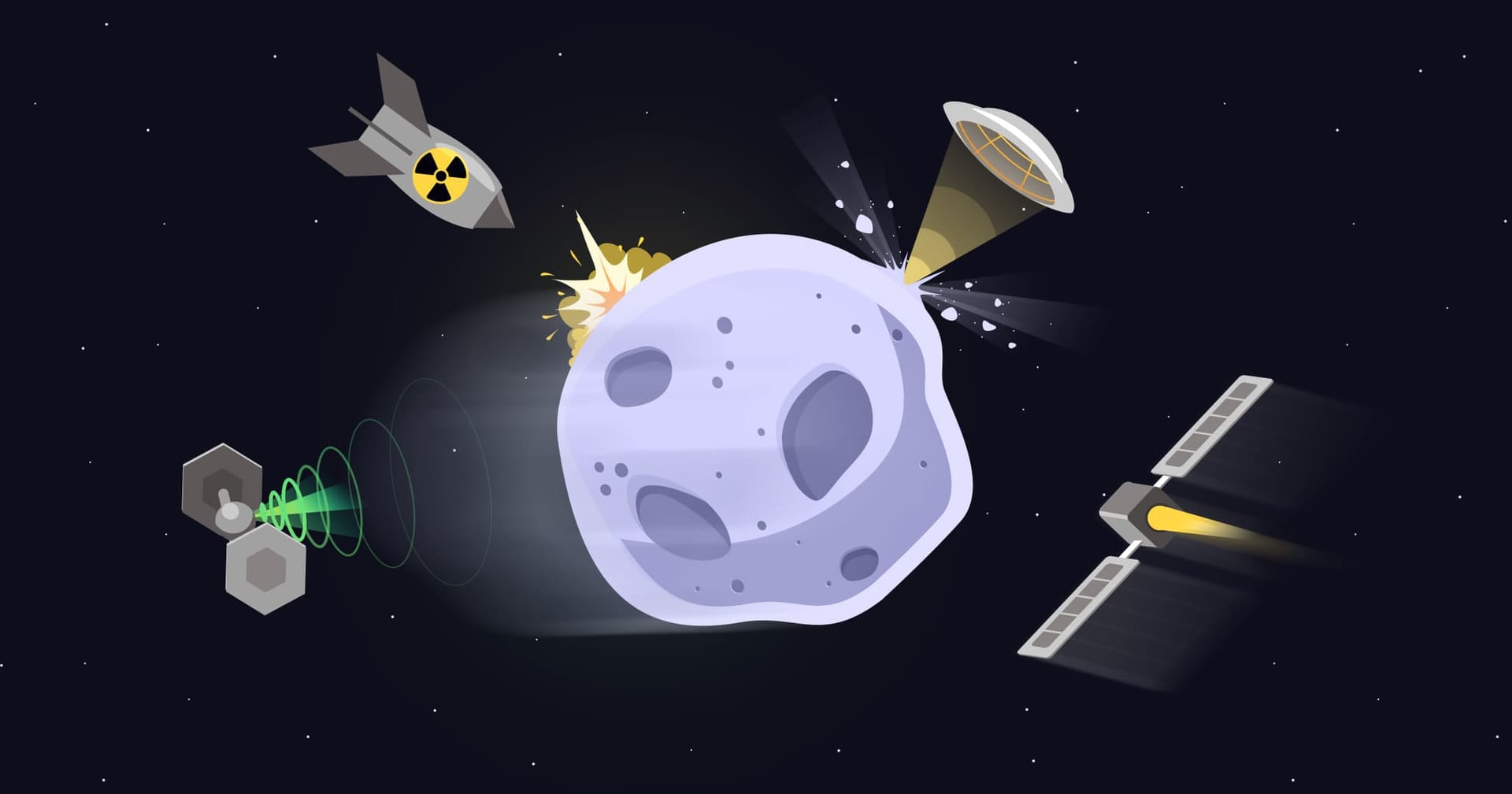Apophis: All About The God of Chaos Asteroid
Out of all the asteroids visible in the Sky Tonight app, 99942 Apophis, also known as the God of Chaos asteroid, stands out as one of the most frequently searched. With good reason: when it was first discovered in 2004, Apophis appeared to be on a collision course with Earth. While that danger has since been ruled out, this near-Earth asteroid still captivates astronomers and the public alike.
Contents
- Asteroid Apophis: basic facts
- Asteroid Apophis in 2029: all you need to know
- Where is Apophis now: September 2025
- Asteroid Apophis: to sum up
Asteroid Apophis: basic facts
What is Apophis?
99942 Apophis is a near-Earth asteroid that orbits the Sun about every 324 days. It was discovered in 2004. Early predictions estimated a 2.7% chance of Apophis hitting Earth in 2029, which led to it being temporarily assigned a Torino Scale rating of 4 – the highest ever recorded for any asteroid at the time, indicating a “close encounter with significant chance of collision”. This sparked widespread concern and comparisons to the apocalyptic Wormwood asteroid from the Book of Revelation. Although further observations ruled out the possibility of impact in the near future, a doomsday atmosphere still lingers around the asteroid. Even its name has a malicious aura.
Apophis meaning: Why is it called the God of Chaos asteroid?
Apophis is named after the evil Egyptian deity, the embodiment of destruction and darkness; that’s why it’s also known as the ‘God Of Chaos’ asteroid. In Egyptian mythology, Apophis (also spelled Apep, Apepi, or Aapep) is a giant serpent trying to devour the Sun every night. His arch-enemy, Ra, as a god of Sun, defeats him every morning at dawn.
Apophis size: How big is the asteroid Apophis?

Apophis is possibly shaped like an egg or a peanut and measures about 370 meters (1,214 feet) in diameter (450 meters (1476 feet) long and 170 meters (557 feet) wide). To compare, the Tunguska impactor that flattened 80 million trees of the taiga forest was about 4 times smaller (100 meters (328 feet) in diameter), and the Chicxulub asteroid that took out the dinosaurs was about 27 times larger (10 kilometers (32808 feet) in diameter).
Many ask about Apophis' size compared to Earth. Well, Earth's diameter is about 12,742 kilometers (7,918 miles), making Apophis roughly 0.003% the size of Earth. While this makes it minuscule in comparison, it's still large enough to be labeled a “city killer” due to its ability to destroy a metropolitan area upon impact.
Apophis damage: What would happen if Apophis hit the Earth?

Apophis is big enough to cause significant local damage. In short, if Apophis hit the Earth, cities anywhere near the impact site wouldn’t stand a chance, and the long-term effects could affect the entire world's population:

- The collision would release energy equivalent to about 1,200 megatons of TNT, or multiple nuclear explosions. That's enough to wreak everything within a few tens of kilometers and cause wildfires over an even larger area.
- If the asteroid fell into the ocean, the consequences would be just as catastrophic: it could trigger tsunamis hundreds of meters high that would wipe out everything in a coastal area.
- The resulting dust and debris (or water vapor, if the asteroid lands into the ocean) thrown into the atmosphere would cause drastic climate change.
Asteroid Apophis in 2029: all you need to know
What will happen on April 13, 2029?

On April 13, 2029 (by the way, that will be a Friday the 13th), Apophis will pass at about 31,600 kilometers (19,600 miles) of the Earth (with an uncertainty region of about 3.4 kilometers). That’s 10 times closer to us than the Moon, and also closer than the ring of geostationary satellites orbiting our planet!
Will Apophis hit the Earth in 2029?
Not anytime soon. Apophis is expected to approach the Earth in 2029, 2036, and 2068, and radar observations and orbit analysis showed it will not hit our planet in either case. Any chance of impact is ruled out for at least the next 100 years (and even further) thanks to the observation campaign conducted in March 2021 (yet, some media and individuals still seem to be unaware). As told by Richard Binzel, a planetary scientist at the Massachusetts Institute of Technology, “the three most important things about Apophis are: Apophis will miss the Earth. Apophis will miss the Earth. Apophis will miss the Earth”.
By the way, we’ve been keeping track of asteroids that have a chance of hitting the Earth this year. Visit the dedicated article to learn more about dangerous asteroids and the ways to detect and deflect them!
What will Apophis look like from Earth in 2029?

No matter what is happening in space, stargazing enthusiasts are always curious about one thing: will we see something special in the sky? Well, yes! On April 13, 2029, Apophis will be visible to the naked eye observers from Europe, Africa, and western Asia. It will look like a rather bright (mag 3) star-like object located in the constellation Cancer. If you watch it for some time, you’ll see it moving slowly (roughly the Moon's diameter per minute). With the help of Sky Tonight, you’ll be able to easily find Apophis and tell it from stars and other bright dots in the sky. Note that shortly after approaching the Earth, it will appear too close to the Sun to be properly observed.
Will we send spacecraft to Apophis in 2029?
Apophis’ flyby in 2029 will be the closest approach to the Earth by an asteroid of this size that has been predicted in advance, so scientists couldn’t let such an opportunity go to waste. Around this time, NASA’s OSIRIS-APEX spacecraft (once known as OSIRIS-REx) will meet Apophis and study it for about the next 18 months. Also, ESA’s RAMSES mission (the Rapid Apophis Mission for Space Safety) will accompany the asteroid during its flyby. By studying how Earth's gravity affects Apophis’ physical characteristics, RAMSES will help scientists better understand how to protect our planet from similar potentially hazardous asteroids in the future.
Where is Apophis now: September 2025
Apophis is currently 2.03 AU (roughly 304 million kilometers or 189 million miles) from Earth. It’s located in Gemini, but extremely faint (mag 21.5), requiring advanced telescopes for observation. No further close approaches are planned until its big 2029 flyby. You can track its current position via TheSkyLive website or Sky Tonight mobile app.
Asteroid Apophis: to sum up
Apophis is a massive near-Earth asteroid that will come close to our planet in 2029, 2036, and 2068. Despite initial predictions made upon its discovery in 2004, Apophis won’t hit the Earth. Try to pass our quiz about asteroids to broaden your outlook and take your mind off the gloomy thoughts of asteroids heading towards Earth.

